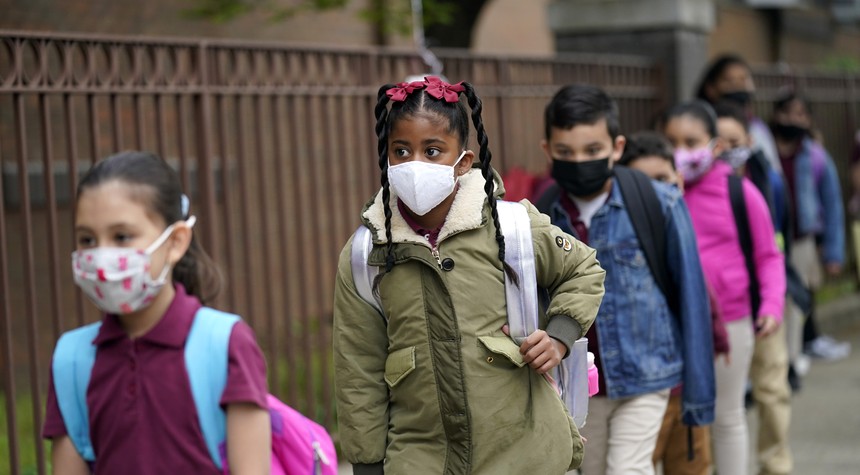CDC Releases the Death Rate of Children Hospitalized for COVID-19
The CDC has released statistics concerning the plight of children hospitalized for COVID-19.
Over the last year and a half, there’s been no more hotly debated topic than that of the coronavirus.
Fierce arguments have erupted online, school board meetings have turned tense, store confrontations have gotten ugly, and social media users have been censored.
And at the center of many a fight: America’s approximately 73 million children.
So what are the real numbers where the pandemic and America’s young progeny are concerned?
On Friday, the Centers for Disease Control and Prevention published its Morbidity and Mortality Weekly Report (MMWR), and it shines a light on the situation.
The report breaks down COVID data from August 2020 to August 2021.
For hospital information, the agency utilized the BD Insights Research Database (BDIRD), covering 260 medical centers.
Analysis reveals there were 1,790 hospitalizations of patients below the age of 18, occurring in 140 of those care centers.
Here’s more:
Median length of stay ranged from 2 to 3 days during the entire period. The percentage of hospitalizations resulting in an ICU admission ranged from 10% to 25% during August 2020–June 2021; percentages were 20% and 18% in July and August 2021, respectively.
As for the incidence of ventilators being needed, that “ranged from 0% to 3% and was highest in October 2020.”
Over the last two months, of 63 Americans 17 and younger admitted to an ICU, the age composition was as follows:
0–4 years = 17 (27%)
5–11 years = 17 (27%)
12–17 years = 29 (46%)
And what’s been the mortality rate for children who were hospitalized?
Over the yearlong span, there were a total of eight “COVID-19-related” deaths among the aforementioned 1,790 minors.
That constitutes a 0.4% death rate among those admitted.
Of course, this isn’t the first time the CDC’s reported high COVID survivability for those under 18.
In mid-December, survival rate was indicated thusly:
0-19 years: 99.99997%
The first COVID vaccine was issued later that month.
Nonetheless, as previously mentioned, tensions where the nation’s young are concerned have remained high.
In August, I reported on the viral video of a teacher in tears comparing a lack of school mask mandates to a mass shooting.
She asked, “[I]f I give COVID to my students or my own children and they die, how am I gonna live with that?”
But in January, a study by the American Academy of Pediatrics suggested transmission of the virus at school was “extremely rare.”
The paper’s exact words:
We examined 11 school districts with nearly 100,000 students/staff open for 9 weeks of in- person instruction, tracking secondary transmission of SARS-CoV-2; within-school infections were extremely rare. Each case was independently adjudicated for community or within-school acquisition by local health departments. … No instances of child-to-adult transmission of SARS-CoV-2 were reported within schools.
Even so, debate surely won’t be subsiding soon.
School boards are likely to witness more scenes such as these:
The CDC also relayed information pertaining to recent weeks:
Among persons aged 0–17 years during the most recent 2-week period (August 14–27, 2021), COVID-19–related ED visits and hospital admissions in the states with the lowest vaccination coverage were 3.4 and 3.7 times that in the states with the highest vaccination coverage, respectively.
There’s doubtlessly going to be a lot more to this story — the story of America and COVID-19.
In March of 2020, we endeavored upon “15 Days to Slow the Spread.”
But it spread to the point of ushering in, not merely a short-term change in our way of life, but what sometimes seems like a permanent one — for children and adults alike.
Stay tuned for more.





Post a Comment